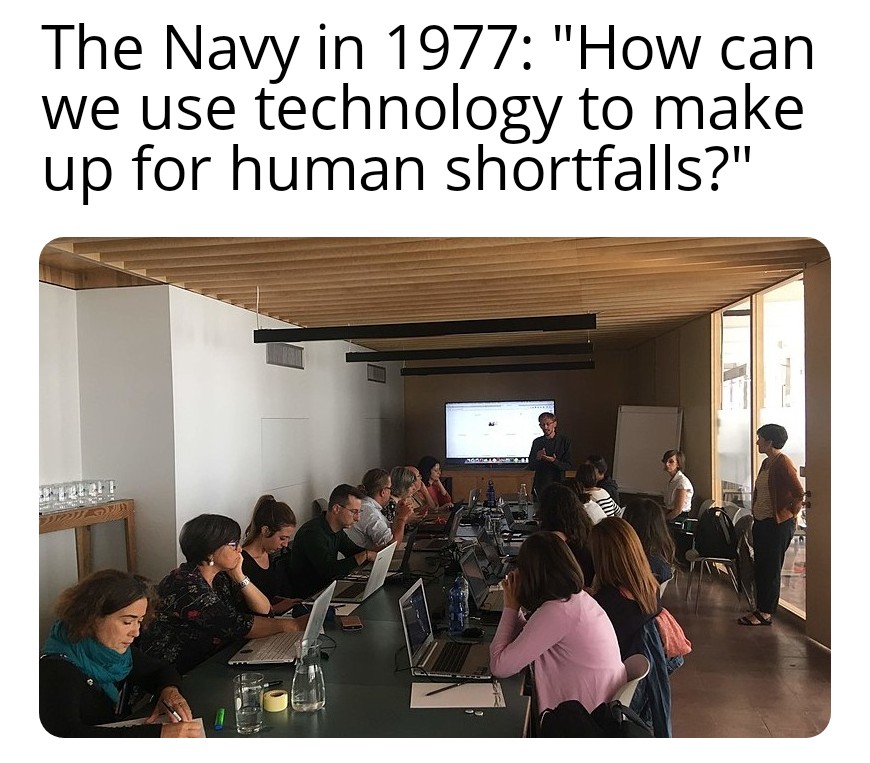
The Department of Defense was the first government organization to incorporate Human Systems Integration into their engineering and project management framework.

The way the Navy has integrated HSI into their engineering practices has created systems which are very robust. In doing so, they have also created a generation of Sailors that has very few actual “technicians” and a lot of people who are just “operators”.

While clicking all of the links for this assignment I thought to myself, “I hope ODU has HSI systems in place to ensure links added to assignments are checked for malicious scripts and other stuff that could mess up my computer.”

The ability in conference software like Zoom and Teams to change your background was an adaptation to a human need. Whether it was to dupe your boss or keep your surroundings private, the technological capability rose to meet a human constraint.

A key concept of HSI is to minimize total ownership costs and optimize total system performance over the life cycle of a program, which means you may leverage more robust systems to justify reducing training costs.

As technology continues to advance, so does human thought. This advance in technological capability is met by the human element to leverage it, epitomizing the Human-Technology Integration Model. For more information, the DoD Human Systems Integration Guidebook is linked here.

Humans leveraging technology where their own capabilities are lacking…

This is an example of how a person can feel when HSI has created such a robust system that their organization didn’t think they needed to teach them how to use a capability.

The subject of a game of hangman on the other side of your computer fighting for his life by giving you hints, i.e. using his capability to complement your limitation.

Another example of how humans use technology to complement their limitations with the capabilities of technology.